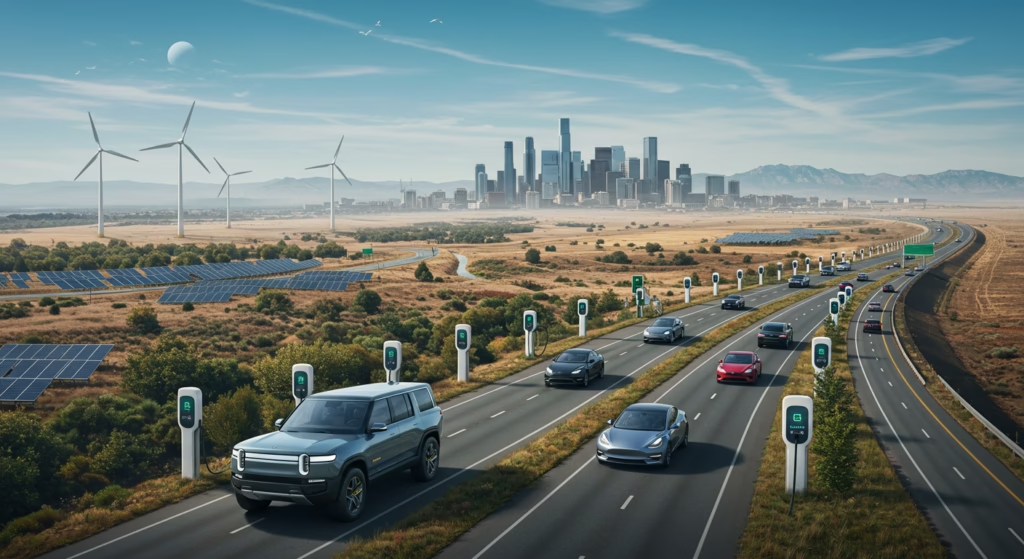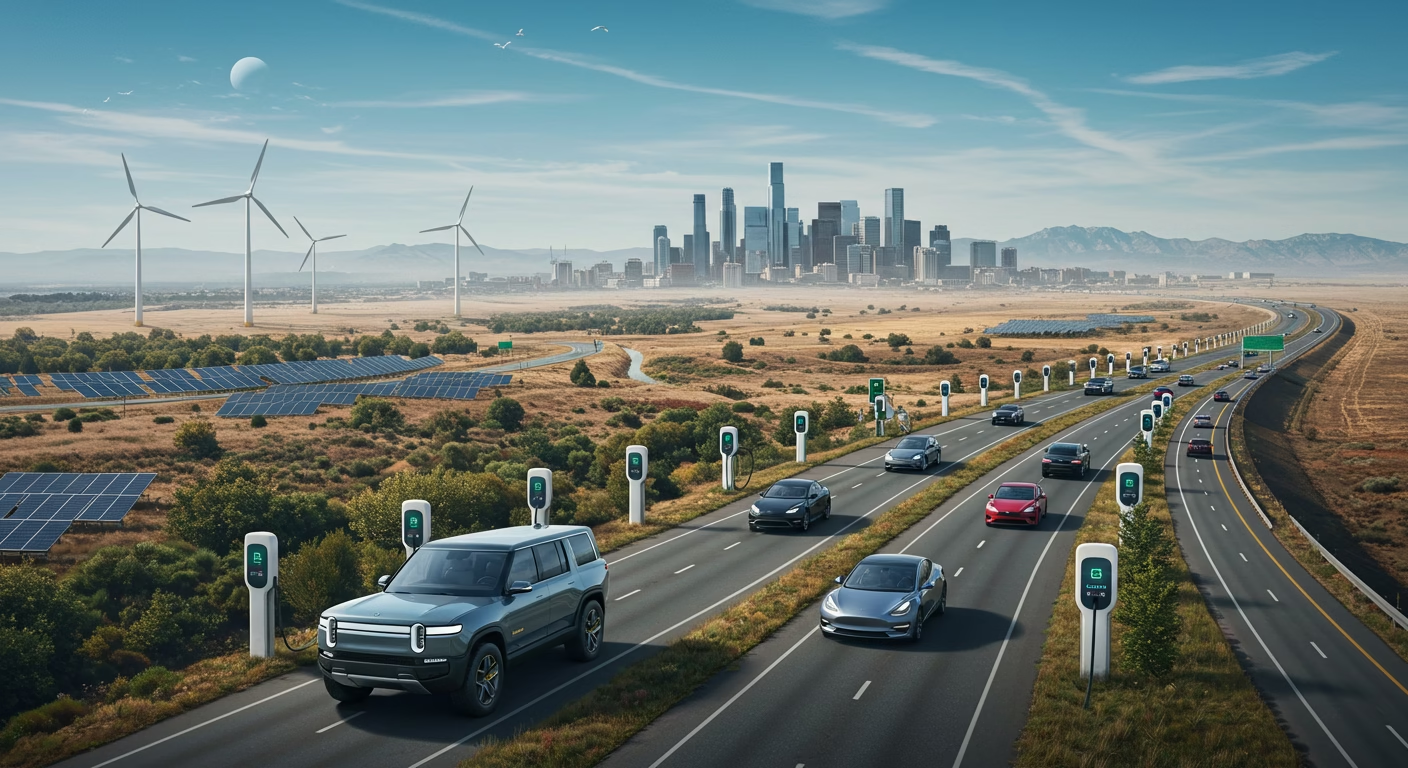
The transition to electrified transportation in the United States is accelerating toward a monumental tipping point, according to a major new study published in Environment, Development and Sustainability. The research delivers a critical, data-backed forecast: the total Electric Vehicle (EV) stock on U.S. roads—including both Battery Electric Vehicles (BEVs) and Plug-in Hybrid Electric Vehicles (PHEVs)—is projected to reach approximately 30 million by the year 2030.
The study’s most urgent accompanying finding is the massive infrastructure deficit this fleet will create. To adequately support 30 million EVs, the nation will require approximately 700,000 (0.7 million) EV charging stations. This projection serves as an essential roadmap for federal and state policy, demanding accelerated investment and planning to prevent a nationwide charging crisis.
The Realistic EV Forecast: A Methodology for Uncertainty
The authors emphasize that accurate projections are the “first step” in successfully navigating the “smooth transition to transportation electrification”. They argue that traditional forecasting models are ill-suited for the inherent uncertainty of a rapidly evolving sector like EVs, especially when historical data is limited.
The research team utilized an advanced grey forecasting model. The results are reportedly consistent with the estimates of the International Energy Agency. The breakdown of the realistic forecast is sharp: Battery Electric Vehicles (BEVs) are projected to make up the vast majority, reaching over 24.8 million units, while Plug-in Hybrid Electric Vehicles (PHEVs) are forecasted to reach just over 5.2 million units by 2030.
Significance for the USA: Closing the “Race” Gap
The findings hold particular weight for the U.S., which, despite being an “early starter in EV technologies,” has historically “lags behind the major EV markets” like China and Europe in terms of production and sales pace. The authors highlight that in 2020, EVs made up only 2.3% of new vehicle sales in the US, compared to 10% in Europe and 6% in China.
The research provides policymakers with empirically grounded data to evaluate and optimize incentives and support to bridge this gap. The paper strongly supports the argument that only strong government action can level the playing field for EV technologies to truly compete. This scientific backing validates the current federal push for electrification policies, suggesting that reliance solely on market forces has caused the U.S. to fall behind the pace of government-supported markets.
Impact on Global Industries, Technology, and Science
The detailed 2030 stock projections are pivotal across multiple sectors worldwide:
- Electric Utility Companies: The forecasts are vital for fuel demand management, allowing utilities to anticipate future electricity consumption, strategically manage grid load, and plan infrastructure upgrades for power generation and distribution.
- Automakers and Suppliers: Automakers can use this data to accurately gauge future consumer demand, refine their vehicle production mix (BEV vs. PHEV), and adapt their marketing and sales strategies for zero-emission vehicles. The semiconductor and battery industries also rely on these projections to plan for the demand for integrated circuits and energy storage components.
The research acknowledges the profound impact of American innovation on the global EV landscape. Despite the U.S. lagging behind major EV markets like China and Europe in overall EV sales, Tesla has emerged as the world’s largest EV company by market cap and the industry’s de-facto leader. However, the paper notes that pioneering companies like Tesla (along with General Motors) faced a significant challenge after becoming ineligible for the crucial US federal tax credit due to reaching domestic sales limits, a setback that occurred at a critical time for climate mitigation. Tesla’s dominance in the U.S. market, though substantial, is only one factor in the broader national adoption strategy, which the study argues requires “strong government action” to accelerate.
In summary, the research offers a clear, data-driven mandate: the U.S. is heading for a transformative EV future, but successful implementation hinges on immediate and decisive policy action to build the required charging backbone.
